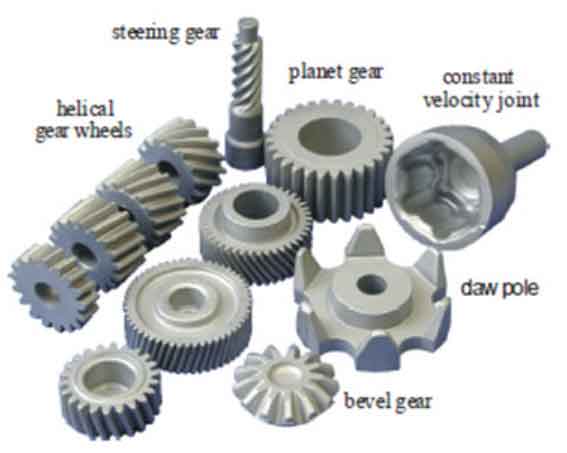
Forging precision gears requires careful attention to detail and strict quality assurance processes to achieve accurate gear geometries and ensure the highest level of performance. Here are the key techniques and quality assurance measures involved in forging precision gears:
- Tooling Design and Manufacturing: The first step in forging precision gears is to design and manufacture high-quality tooling, including dies and punches. Tooling design involves precise calculations and simulations to achieve the desired gear profile and dimensions.
- Material Selection: Choosing the right material is crucial for precision gears. High-quality alloy steels with excellent mechanical properties are commonly used to ensure the gear’s strength and durability.
- Heating and Temperature Control: The material is heated in a controlled environment to a specific temperature range, ensuring it reaches the ideal forging temperature for malleability without overheating.
- Precision Forging Process: Precision forging involves highly controlled deformation of the heated material using closed-die forging or near-net-shape forging techniques. The process is carefully monitored to achieve accurate gear dimensions and minimize any distortion.
- Multi-Stage Forging: For complex gear shapes, multi-stage forging may be employed to achieve the desired contours gradually. This ensures better control over material flow and reduces the need for excessive machining.
- Flash Control: Precision forging aims to minimize flash, the excess material that escapes between the dies during forging. Flash control ensures dimensional accuracy and reduces material waste.
- Heat Treatment: After forging, the gears undergo heat treatment processes such as quenching and tempering to optimize their mechanical properties, including hardness, toughness, and wear resistance.
- Machining and Finishing: Precision gears may undergo secondary machining operations, such as gear grinding or hobbing, to achieve precise gear tooth profiles and surface finishes.
- Dimensional Inspection: Throughout the forging and machining processes, precision gears undergo rigorous dimensional inspections using advanced metrology equipment to ensure they meet the required tolerances and gear specifications.
- Non-Destructive Testing (NDT): Non-destructive testing techniques, such as ultrasonic or magnetic particle inspection, are performed to detect any internal defects or inclusions in the gears.
- Quality Control and Traceability: Each gear is assigned a unique identification number to track its manufacturing process and materials. Comprehensive quality control measures are in place to ensure consistent and reliable gear production.
- Certification and Documentation: Precision gear manufacturers provide certification and detailed documentation for each gear, stating its material, dimensions, heat treatment, and other critical properties.
The combination of these techniques and quality assurance measures ensures that precision forged gears meet the highest standards of accuracy, strength, and performance. These gears are widely used in industries where precise power transmission and reliability are essential, such as aerospace, automotive, robotics, and high-precision machinery.
